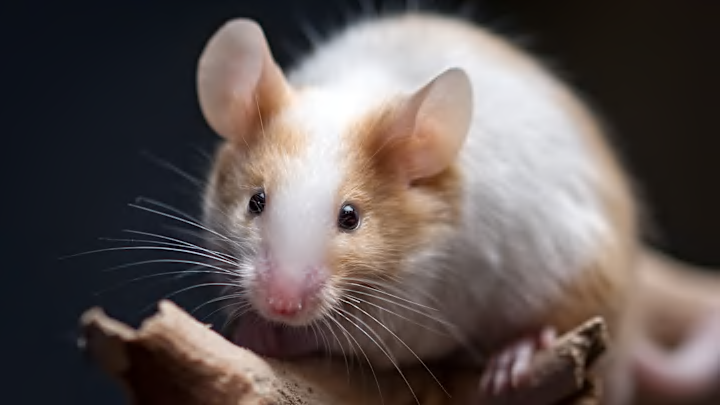At some point in time, society decided mice were the preferred rodent. They’ve been anthropomorphized in cartoons, kept as pets, and even had a common tech interface (the mouse) named after them.
Rats, on the other hand, invoke terror, are believed to spread disease, and are generally vilified despite not being all that dissimilar to mice. So what’s the difference between these two gnawing pests?
Rat vs. Mouse Appearance
Rats and mice both belong to the order Rodentia, home to other nibbling creatures like beavers and squirrels. The biggest difference between rats and mice is in their size. Mice are typically between 1 and 7 inches in length and are quite petite, sometimes weighing in at less than 1 ounce.

The rat is a comparative giant, clocking in at up to 10 inches and tipping the scales at up to 2 pounds, though 1.25 pounds is the average. Their tails are much longer than those seen in mice, adding another 10 inches in length. Those figures are probably why rats tend to provoke more fear and shock in people who discover them indoors. Despite their largesse, rats tend to leave fewer droppings behind than mice.

Physical characteristics also differ. Mice tend to have triangle-shaped faces and hairy tails, while rat faces are more squared off and have largely hairless tails. While both can vary in color from gray to brown to white, rats can also have a black coat.
Sometimes it can be difficult to tell the difference between an adult mouse and an immature rat given that they might be closer in size. Typically, mice will have a gray or white underbelly.
Rodent | Genus | Body Size | Weight | Color | Tail |
|---|---|---|---|---|---|
Mouse | Peromyscus, Mus | 1-7 inches | 1 ounce | Gray, brown, white | 2-4 inches, hairy |
Rat | Rattus | 6-10 Inches | 1.25 pounds | Gray, brown, white, black | Up to 10 inches, hairless |
Rat vs. Mouse as Pests
Rats and mice have different behavioral characteristics, which can influence how they move inside of your home. Mice are curious, meaning they might be more prone to investigate a trap. Rats are more apprehensive and suspicious and therefore harder to corral. Mice are also better vertical climbers, making their way up walls and into attic spaces. The heavier rat is more likely to take up residence in basements.
Both rats and mice make poor squatters in homes. They leave oily marks on heavily traveled surfaces. In addition to being destructive—they can chew through wire—both can reproduce in great number. Mice average about 300 offspring annually, while rats are closer to 1000.
Both can also spread disease via their droppings, urine, or saliva. Sweeping or otherwise disturbing these secretions can permit transmission to humans.
One thing they have in common is an ability to enter buildings through very tiny holes as small as a half-inch in diameter. There's really no “better” pest to have in your home. If you see droppings or other evidence of a rodent, call a pest control professional.
Rat vs. Mouse in Research
Countless scientific studies use mice and rats to investigate a variety of medical interventions, drugs, and behaviors. By some estimates, more than 90 percent of all animals used in such research are rodents.
Experiments involving physically invasive procedures like surgery are often better tolerated in the larger rat. Because they’re more social, they also tend to exhibit less stress when being handled by humans.
Rat vs. Mouse as Pets
Despite their reputations, both rats and mice are popular pet options. Owing to their aforementioned sociability, rats tolerate human handling and don’t often bite. Mice, on the other hand, don’t love being picked up. Two males in the same habitat may also fight. A more common pet rodent is the guinea pig, which is typically “friendlier” than either a rat or mouse and lives 5 to 7 years—longer than the 1 to 3 years of mice and 2 to 4 years of rats. Unlike rats, guinea pigs are diurnal, meaning they’re likely to be awake when you are during the day.
Have you got a Big Question you’d like us to answer? If so, let us know by emailing us at bigquestions@mentalfloss.com.
